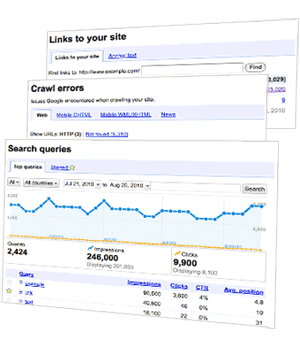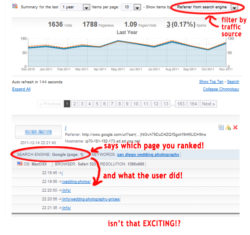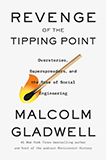I have stated numerous times that I don’t really believe in SEO (search engine optimization) tactics. Sure, you can painstakingly devote many hours (or even pay someone) to optimizing your site for search engines, but in the end, what helps the most is good content.
That being said, roughly half of my traffic comes from search engines, and after 10+ years of blogging, I like to think that I have picked up some tips to help you get your site easily and efficiently found by web searches. Some of these tips are no-brainers for any seasoned blogger, while others are extra little things I have discovered over the years to significantly increase traffic from search engines. Enjoy!
1. Install an SEO plugin.
If you are running WordPress, this is pretty simple to do. The All in One SEO Pack is perhaps the most popular of them all, and for good reason. Even if you don’t know a thing about SEO, just set it to its default settings and you’re good to go.
2. Build an XML sitemap.
A sitemap is a list of pages of a website that are accesible to visitors. And since Google, Yahoo, Bing, and Ask all use the same protocol for accepting sitemaps (which is in XML format), having an XML sitemap for your website will make it that much easier for these search engines to crawl your site.
Once again, if you are using WordPress, you can easily do this by installing the Google XML Sitemaps plugin, which automatically builds — and updates — the sitemap for you. Or, if you’re not on WordPress, you can visit one of the many XML sitemaps generators online (like XML-Sitemaps.com) and have them generate one for you, then upload it to your site.
3. Sign up for a Google Webmaster Tools account.
Google is the world’s largest and foremost search engine. Google likes its own products and services, and plays well with them. So go sign up for a Google Webmaster Tools account now, so that you can:
- “Claim” your website
- Set up how Google will crawl your site
- Access data such as error/crawl logs, web metrics, and analytics.
4. Optimize your site for faster loading.
In 2010, Google announced that it will start counting speed as a ranking factor. And while it claims that only a very small number of websites will be significantly affected by this change, it never hurts to ensure that your site loads fast and efficiently, right?
Here are some free services that will allow you to evaluate, and analyze the speed of your site:
- Google Page Speed — Google’s own tool for evaluating the performance of web pages. It also provides suggestions for improvement.
- YSlow — a free tool from Yahoo! that suggests ways to improve website speed.
- WebPagetest — shows a waterfall view of your pages’ load performance plus an optimization checklist.
- Google Webmaster Tools — under Labs -> Site Performance, you can view the speed of your website as experienced by users around the world.
If you feel that your site could use a speed boost, the easiest thing to do (as a WordPress user) is to download one of the many caching plugins available, like WP Super Cache, W3 Total Cache, or Quick Cache. I have tried all three and found Quick Cache to be simplest and least intrusive, but this really depends on your own site and preferences.
You can also try CloudFlare, which claims to “supercharge” your site.
I personally use Google Page Speed Service (PSS) for this site. While results vary between different caching/optimization services for each website, I personally have found PSS to deliver the best results. You can see more of my own thoughts on PSS here. Plus, see what I said above about Google liking its own products. 😉
5. Make sure you are pinging as many services as possible.
I’m always amazed whenever I look at friends’ or clients’ blog installations and see that they’re only set to ping one or two services. (If you have no idea what I’m talking about, pinging is done when you update your site and your platform notifies site updating services of the change.) Here is a list of ping services that I use on all my websites:
http://blogsearch.google.com/
http://api.my.yahoo.com/RPC2
http://rpc.pingomatic.com
http://rpc.twingly.com
http://api.feedster.com/ping
http://api.moreover.com/RPC2
http://api.moreover.com/ping
http://api.my.yahoo.com/RPC2
http://api.my.yahoo.com/rss/ping
http://www.blogdigger.com/RPC2
http://www.blogshares.com/rpc.php
http://www.blogsnow.com/ping
http://www.blogstreet.com/xrbin/xmlrpc.cgi
http://bulkfeeds.net/rpc
http://www.newsisfree.com/xmlrpctest.php
http://ping.blo.gs/
http://ping.feedburner.com
http://ping.syndic8.com/xmlrpc.php
http://ping.weblogalot.com/rpc.php
http://rpc.blogrolling.com/pinger/
http://rpc.technorati.com/rpc/ping
http://rpc.weblogs.com/RPC2
http://www.feedsubmitter.com
http://blo.gs/ping.php
http://www.pingerati.net
http://www.pingmyblog.com
http://geourl.org/ping
http://ipings.com
http://www.weblogalot.com/ping
On WordPress, you would copy & paste this list into Settings -> Writing -> Update Services.
6. Write VERY descriptive titles.
This may sound self-explanatory, but so many bloggers easily ignore this rule (including myself). Always remember that search engines place higher priority on titles than the body of the post. Which do you think will have better SEO results:
“How to Fly a Kite”
or,
“How to Fly a Kite in High Altitude and Low Wind Conditions”
Not only will descriptive titles ensure that visitors find exactly what they’re looking for when they click on through from a search engine, it will also place you higher in rankings because the chances of others using that same (or a similar) title are lower.
7. Don’t ignore your pictures!
Most experienced bloggers know that when uploading pictures to your site, you shouldn’t ignore the ALT tag (or the “alternate text” field). But SEO experts will also advise you to caption your photos and fill in the description fields too.
Wanna hear an additional hint? Name your pictures properly before uploading them. I have actually been doing this for quite some time now, and personally have found this to produce better results than the ALT tags, captions, or descriptions.
What do I mean by naming images? Instead of leaving your photos just as they are (e.g., “IMG_0955.jpg”), rename it to something descriptive of the photo, like “baby_playing_with_sophie_giraffe.jpg”.

“Baby Playing with Sophie the Giraffe”
8. Ask your friends to link to you!
The more sites you have linking to your own site, the higher that Google and other search engines will place you. And if the site linking back to you has high traffic and/or has a lot of sites linking to it? Much better, since this will help increase your Google PageRank.
Aside from Google Analytics and Webmaster Tools, another service that checks the number of sites linking back to you is Alexa.com. I know that some people think Alexa is on its way out, but it still is considered one of the foremost sources to check a site’s popularity. (Alexa, along with PageRank, are the services used most often by marketers to initially check stats on a site when they’re considering you for partnerships, sponsorships, and affiliations.)
I hope this was helpful to at least one reader. 🙂 If you have any questions, please don’t hesitate to ask! And if you have any further tips, please share them in the comments section!







 I like books, gadgets, spicy food, and art. I dislike shopping, hot weather, and the laws of entropy. Although I am a self-proclaimed computer nerd, I still have a love for handbags and makeup... and I am always teetering on high heels. To learn more about me, visit the
I like books, gadgets, spicy food, and art. I dislike shopping, hot weather, and the laws of entropy. Although I am a self-proclaimed computer nerd, I still have a love for handbags and makeup... and I am always teetering on high heels. To learn more about me, visit the 


Hey Jenny, I have actually been looking into SEO for my blog. It’s hosted at WordPress.com though, not WordPress.org which would allow plug-ins. Also I tried to add the ping sites but no option in my settings. Any suggestions for newbies like me? 😛
I know that WordPress.com has its own pinging method, so I did a quick search and this is what it says:
As for plugins, I’m afraid you’re out of luck as a WordPress.com user. 🙁 The good news is that the WordPress.com team does a pretty good job of running and updating its blogging platform, so if you’re satisfied with what you have now, you have no reason to switch. But if you want more customizations and control over your blog, I highly recommend you switch to a self-hosted WordPress.org blog. Web hosts these days are pretty cheap, and they make installing WordPress pretty easy. (And I can help you out if you need help moving.)
Thanks for all the tips! I bought my domain thru WordPress so I may move to WordPress.org at the end of the yr. My blog is still relatively new so I wanna see if I can build up my readership first. I’m not making any money off my blog now anyway, nor was that my intention when I started blogging. But yeah, thanks also for reading my blog. 🙂
This is very helpful! Thank you! I’m thinking about starting a newer site for something different than my current blog, so I’m trying to learn as much about WordPress as I possibly can. I will probably be starting it in WordPress and I find it rather intimidating. I totally agree about naming your pictures. I know that much of my search engine traffic comes from people looking for images of certain places and foods. I also notice that much of my traffic comes from just being an active commenter on a few blogs. It makes a difference.
Yes! When I first started blogging and wanted more visitors, I commented like CRAZY on popular blogs, blogs I admired, and on friends’ blogs. This is the way I eventually got featured on some big name blogs like Neatorama and Boing Boing. I wish I had more time to comment these days because I really do believe that commenting is one of the best ways to get your name out there. Thanks for reminding me of this. 😀
Wow, so many things I’ve never thought of! Thanks for the tips!
THANK YOU!! Seriously, this post is so helpful. I already had the webmasters, but I installed all the plugins you suggested and did the pings. I get pretty lost when it comes to SEO, so this was super helpful!
Thank you for a great detailed post. I have read other SEO articles and they tend to be very general and not helpful.
Very, very helpful post!! I’m usually way too lazy to name my pictures, but I know I should because it does help!! Thanks for these tips!
This is AWESOME! Thanks!!!! I’ve been trying to work on my seo rating for a while, but this is definitely the simplest “what you should do” list I’ve seen. 🙂 I do have a quick question, though: I’ve always rewritten the names of my photographs (in the title box). If you do this, should you still be filling out the “alternative” and “caption” areas with more text? And should it be the same text or different?
Thanks!!!
-giedre
From what I know, the title and alternative are different in that while a title provides additional information about an image, the alt is used when the picture does not load for some reason and the viewer can see a text instead.
But to answer your question, I believe that most SEO experts will tell you in this case, the more information you fill out the better. 🙂 And titles tend to be more descriptive than the alt, while captions are what’s actually displayed for all viewers to see under the image. So they all serve different purposes and you can fill in different things in order to go all-out.
(Also, renaming the name of the image file is different from just changing the title of the image. I wasn’t sure if this is what you were doing.)
How do you figure this stuff out by yourself? I honestly don’t understand half the stuff you wrote, but I did it anyway 🙂
Just wanted to say THANKS for this post! The littlest tricks can do a glorious difference!
Hey Jenny! Is my blog set up for the pinging thing? I want to do that 🙂
Squarespace has its own pinging service set up (you can see it in when you go to the Structure Editing Mode, then click on “Configure This Page” at the top of the blog’s main page…then scroll down to where it says “XML-RPC Ping Options”). Unfortunately, you can’t add more to the list they already have, but rest assured that they’re the largest and most popular pinging services. Oh, and I double-checked for you to make sure that your blog is set to ping all services. 🙂
I know this is totally self-serving, but these types of posts are my absolute favorite! You are so smart and always have the best blogging tips! Thanks for sharing; so helpful!
Hi, I know this is an old post, but I’m new to blogging and I switched from wordpress.com to Squarespace. Any SEO advice? Everything I read says that there’s not much to do, but it’s driving me crazy because I feel as if I don’t have any control. And can I use Ping-o-matic with Squarespace as well?
Thanks,
Shelbi